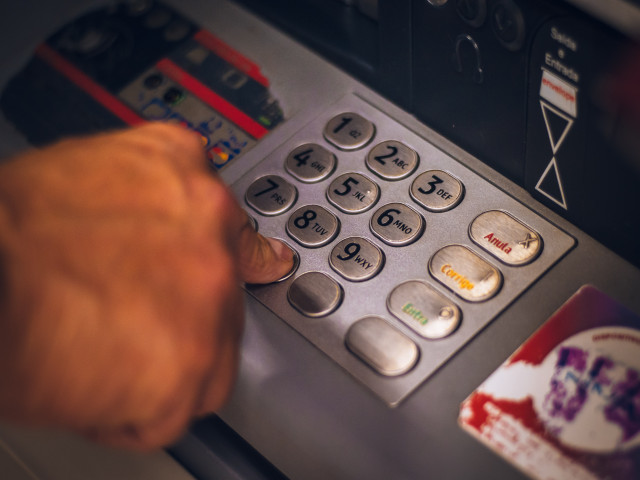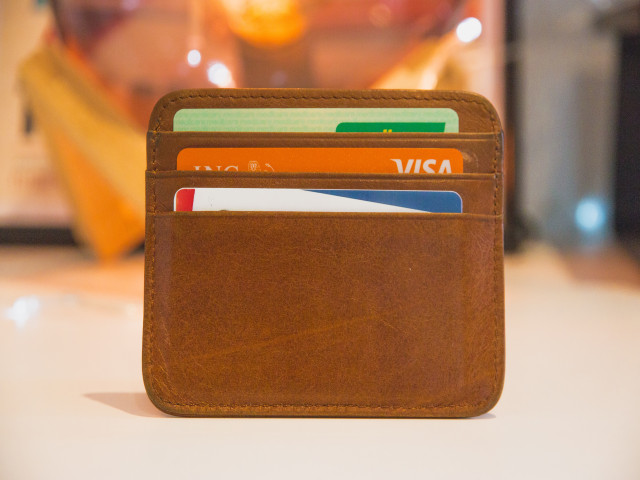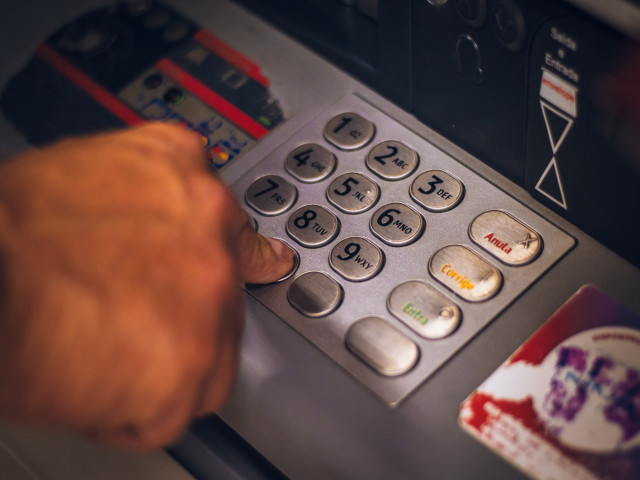17 Jan 2024
Exploring Peer-to-Peer Payment Apps: A Comparison of Zelle, Venmo, and More

Introduction
In an era where digital transactions reign supreme, peer-to-peer payment apps have become indispensable for quick and convenient money transfers. With a plethora of options available, choosing the right app can be a daunting task. This article aims to simplify that decision-making process by providing an in-depth comparison of some of the most popular peer-to-peer payment apps, including Zelle, Venmo, and more. Whether you're looking for efficiency, social integration, or additional features, this exploration will guide you through the intricacies of each app, helping you make an informed choice tailored to your preferences.
Zelle: The Bank-Backed Efficiency
Background and History
Zelle, a peer-to-peer payment service, has rapidly become a cornerstone in the digital financial landscape. Launched in 2017, it was created as a collaborative effort among major U.S. banks to streamline and enhance person-to-person transactions. Zelle's inception marked a significant shift in the financial industry towards embracing digital solutions for seamless fund transfers.
Key Features
Zelle's popularity can be attributed to its user-friendly interface and real-time transaction capabilities. The platform enables users to send and receive money directly from their bank accounts using only a recipient's email address or mobile number. With support from numerous major banks, Zelle facilitates transactions between different financial institutions, fostering interoperability and convenience.
Security Measures
Security is a paramount concern in the digital finance realm, and Zelle addresses this with robust measures. Utilizing advanced encryption protocols, Zelle ensures the protection of users' sensitive information. Additionally, the service employs multi-factor authentication, adding an extra layer of security to transactions. Users can trust that their financial data is safeguarded while enjoying the convenience of swift and efficient payments.
Pros and Cons
Zelle's efficiency is evident, but like any financial service, it has its pros and cons. One of its major advantages is the widespread adoption by banks, making it accessible to a broad user base. The real-time nature of transactions sets it apart, providing unparalleled speed. However, some users may find the lack of international capabilities a drawback. Additionally, while security measures are robust, users must remain vigilant to prevent potential fraud or scams.
User Experience
Zelle prides itself on a seamless and intuitive user experience. The platform's design prioritizes simplicity, ensuring that users can navigate effortlessly through the app. With a straightforward setup process and minimal transaction steps, Zelle offers a hassle-free experience for both tech-savvy users and those new to digital banking. The instant transfer of funds enhances overall satisfaction, contributing to the positive user sentiment surrounding Zelle.
Venmo: Social Payments and Beyond
Introduction to Venmo
Venmo, a pioneer in the world of peer-to-peer payments, has transformed the way individuals exchange funds. Acquired by PayPal in 2013, Venmo quickly gained popularity for its user-friendly app and its social-centric approach to payments. Designed with simplicity in mind, Venmo has become synonymous with easy, quick, and social financial transactions.
Social Integration
At the heart of Venmo's appeal is its social integration. Users can add comments, emojis, and even share transactions on a social feed, creating a unique and interactive financial experience. This social aspect adds a layer of transparency to transactions, allowing friends to see and engage with each other's payment activity. The platform's social feed fosters a sense of community, making Venmo not just a payment tool but a social platform for financial interactions.
Transaction Limits and Fees
Venmo offers flexibility with its transaction limits, allowing users to send and receive varying amounts based on their account verification level. While standard transactions are free, expedited transfers and credit card transactions may incur nominal fees. Understanding these limits and fees is crucial for users to make informed decisions about their payment preferences on the platform.
Security Measures
Venmo prioritizes the security of user information and transactions. Employing encryption protocols similar to its parent company PayPal, Venmo ensures that financial data remains confidential. Additionally, users can set up multifactor authentication for an added layer of protection. Regular security updates and features like PIN protection contribute to a secure environment, instilling confidence in users regarding the safety of their financial activities on the platform.
User Experience
Venmo's success lies in its emphasis on user experience. The app's intuitive design simplifies the payment process, making it accessible to users of all ages. Quick transfers and a straightforward payment interface contribute to a positive user journey. The social feed not only adds an element of fun but also enhances transparency, creating a sense of trust among users.
Unique Features
Beyond its primary function as a payment platform, Venmo stands out with unique features. The Venmo card allows users to make purchases using their Venmo balance, adding a layer of versatility to the platform. Splitting bills, requesting payments, and setting reminders for pending transactions are additional features that cater to diverse user needs. Venmo's continuous innovation ensures it remains at the forefront of the digital payment landscape.

PayPal: The Veteran in the Game
Overview of PayPal's History
Founded in 1998, PayPal is a veteran in the digital payment industry, having played a pivotal role in the evolution of online transactions. Originally conceived as a secure method for transferring money between Palm Pilots, PayPal has grown into a global financial powerhouse. Its longevity in the market attests to its adaptability and enduring relevance in the ever-changing landscape of digital finance.
Peer-to-Peer Payments with PayPal
PayPal's journey began with a focus on facilitating online transactions, but it has since expanded to include robust peer-to-peer payment capabilities. Users can send money to friends, family, or anyone with an email address, making it a versatile tool for personal and business transactions. The ease of connecting bank accounts and cards to PayPal accounts has made it a go-to platform for individuals seeking a secure and convenient way to transfer funds.
Transaction Fees
Understanding PayPal's fee structure is essential for users navigating the platform. While sending money to friends and family within the same country is usually free, certain transactions, such as cross-border transfers and business-related payments, may incur fees. Familiarizing oneself with these fees ensures transparency in financial transactions and helps users make informed choices based on their specific needs.
Security Measures
As a pioneer in the digital payment space, PayPal places a premium on security. The platform employs advanced encryption technologies to safeguard user information and transactions. Additionally, PayPal's Purchase Protection feature provides users with added confidence, ensuring that eligible purchases are protected in the event of disputes. With a strong commitment to user safety, PayPal has maintained a reputation for secure online financial transactions.
User Experience
PayPal's user experience is characterized by its user-friendly interface and widespread acceptance. The platform's seamless integration with various online retailers and services enhances its usability. The ability to link multiple funding sources, including bank accounts and credit cards, offers users flexibility in managing their finances. PayPal's intuitive design and straightforward payment process contribute to a positive overall user experience.
Integration with Other Services
One of PayPal's strengths lies in its integration with a myriad of online services and platforms. Users can effortlessly make payments on e-commerce websites, subscribe to digital services, and even crowdfund through the platform. The versatility of PayPal extends beyond peer-to-peer transactions, making it a central hub for various financial activities on the internet.
Factors to Consider When Choosing a P2P Payment App
Security and Privacy
Security is paramount when selecting a peer-to-peer payment app. Look for platforms that employ robust encryption protocols to safeguard your financial data. Two-factor authentication adds an extra layer of protection, ensuring that only authorized users can access accounts. Additionally, consider apps with features like transaction alerts and biometric authentication to enhance privacy and prevent unauthorized access.
Transaction Fees and Limits
Understanding the fee structure and transaction limits of a P2P payment app is crucial for managing your finances effectively. Some apps offer free transactions for standard transfers, while others may charge fees for expedited or international transfers. Be aware of any percentage-based fees and ensure that the app aligns with your budget and usage patterns. Also, consider the transaction limits to ensure they meet your financial needs without hindrance.
Speed and Accessibility
The speed of transactions is a key consideration, especially if you often need to transfer funds urgently. Look for P2P payment apps that offer real-time or near-instantaneous transfers to ensure quick and efficient transactions. Accessibility is equally important; the app should be compatible with a variety of devices and operating systems, enabling you to make payments conveniently from your preferred platform.
Integration with Other Services
A P2P payment app that integrates seamlessly with other services enhances its utility. Consider apps that allow you to link your account to various platforms, such as online retailers, bill payment services, and financial management tools. Integration simplifies financial tasks and provides a more cohesive experience, allowing you to manage your money efficiently within a single ecosystem.
User Interface and Experience
A user-friendly interface contributes significantly to the overall experience of using a P2P payment app. Choose an app with an intuitive design and straightforward navigation. Clear and concise transaction histories, recipient information, and settings make it easier to manage your financial activities. An app with a well-designed user interface ensures that you can confidently and efficiently navigate through the platform, enhancing your overall satisfaction.
FAQs
Q: Can I use P2P apps for international transactions?
A: It depends on the platform. While some P2P apps support international transactions, others may be limited to domestic use.
Q: Are P2P transactions safe?
A: Yes, P2P transactions are generally safe. However, it's crucial to choose a reputable platform and follow recommended security practices.
Q: What are the typical transaction limits on P2P apps?
A: Transaction limits vary by platform and user status. Check the terms of each app for specific details on transaction limits.
Q: Are there fees associated with using P2P apps?
A: Yes, some P2P apps may charge fees for certain transactions. Familiarize yourself with the fee structure of each platform.
Q: Can I link multiple bank accounts to P2P apps?
A: The ability to link multiple bank accounts varies by platform. Check the settings of your chosen app for this feature.
Q: How quickly do P2P transactions usually occur?
A: P2P transactions often happen in real-time, providing quick and convenient transfers between users.
Conclusion
As we navigate the landscape of peer-to-peer payment apps, it becomes evident that each platform caters to a unique set of needs and preferences. Zelle, with its bank-backed efficiency, offers seamless transactions, while Venmo adds a social layer to the payment experience. Cash App goes beyond simple money transfer, and PayPal, a veteran in the game, brings a wealth of features and integrations.
As you consider the various options, it's crucial to weigh factors like security, fees, speed, and user experience. The future of peer-to-peer payments is dynamic, with technology continuously evolving. The choice you make today not only reflects your current needs but also positions you for the advancements that lie ahead. Whether you prioritize the simplicity of Zelle, the social connectivity of Venmo, or the versatility of others like Google Pay and Apple Pay, the decision is ultimately yours. Choose wisely, and embrace the convenience of peer-to-peer payments in the digital age.
RELATED POST
https://dollardirect.cc/blog/mobile-banking-security-how-to-safely-manage-your-money-on-the-go/144














